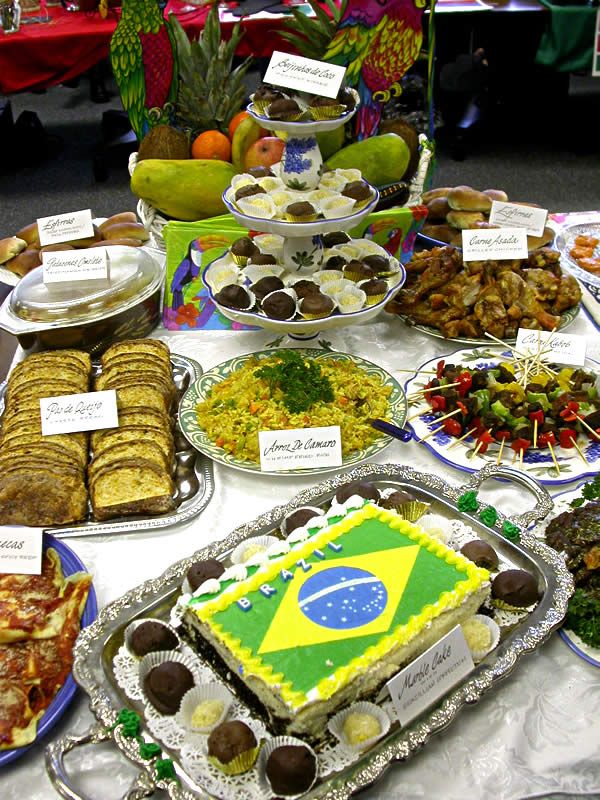Introduction: The Rich Flavors of Brazil
Brazilian cuisine is renowned for its rich and diverse flavors, ranging from the savory and spicy to the sweet and tropical. At the heart of this culinary tradition lies the use of spices and herbs, which add depth and complexity to dishes and reflect the country’s cultural and historical influences. Whether you’re cooking up a feijoada, a seafood stew, or a coconut dessert, the right blend of spices can take your taste buds on a journey across Brazil’s diverse regions and traditions.
Brazilian Spice Blends: A Culinary Delight
Brazilian spice blends are an essential part of the country’s cuisine, bringing together a wide range of ingredients and flavors that reflect the country’s diverse cultural influences. From the African and Indigenous roots of Brazilian cooking to the European and Asian influences that have shaped its history, Brazilian spice blends are a unique and delicious way to experience the country’s culinary diversity. Whether you’re a seasoned chef or a beginner in the kitchen, exploring the world of Brazilian spices can be a fun and rewarding experience.
Understanding the Importance of Spices in Brazilian Cooking
Spices have played a central role in Brazilian cooking for centuries, and are a testament to the country’s rich history and cultural diversity. From the aromatic and pungent flavors of Bahian spice blends to the bright and zesty notes of chimichurri seasoning, spices are used to add depth, balance, and complexity to dishes, and can be tailored to suit a wide variety of tastes and preferences. Whether you’re looking to add some heat to a dish or infuse it with a subtle sweetness, Brazilian spices are an important tool in any cook’s arsenal.
The Top 3 Traditional Spice Blends in Brazilian Cuisine
When it comes to traditional Brazilian spice blends, there are three that stand out above the rest: Bahian spice blend, chimichurri seasoning, and tempero baiano. Each of these blends has a unique flavor profile and history, reflecting the country’s diverse cultural and culinary influences. Whether you’re looking to spice up your meat dishes or add some depth to your vegetarian meals, these blends are a must-have in any kitchen.
Bahian Spice Blend: Aromatic and Flavorful
Bahian spice blend, also known as tempero baiano, is a staple in Brazilian cooking, especially in the northeastern state of Bahia. This blend is a mix of cumin, coriander, ginger, paprika, and other spices, and is known for its rich, aromatic flavor and deep red color. Bahian spice blend is perfect for seasoning meat, poultry, and seafood dishes, and can also be used to add a bold and spicy flavor to vegetarian dishes.
Chimichurri Seasoning: A South American Classic
Chimichurri seasoning is a classic South American spice blend that is widely used in Brazil, especially in the southern regions of the country. This blend is made from a mix of fresh herbs, including parsley, oregano, and cilantro, as well as garlic, chili flakes, and vinegar. Chimichurri seasoning is perfect for marinating meat or fish, and can also be used as a condiment or dipping sauce.
Tempero Baiano: A Blend of African, Indigenous and Portuguese Ingredients
Tempero baiano is a spice blend that is widely used in Brazil, especially in the northeastern state of Bahia. This blend is a mix of African, Indigenous, and Portuguese ingredients, including cumin, black pepper, coriander, and bay leaves. Tempero baiano is known for its complex and rich flavor, and is perfect for seasoning meat, poultry, and seafood dishes.
How to Best Incorporate Brazilian Spice Blends Into Your Cooking
Brazilian spice blends are a versatile and exciting way to add flavor and depth to your cooking. Whether you’re using Bahian spice blend to season your chicken or chimichurri seasoning to marinate your steak, these blends are easy to incorporate into a wide range of dishes. To get the most out of your Brazilian spice blends, experiment with different combinations and proportions, and don’t be afraid to add a little extra heat or sweetness to suit your tastes. With a little experimentation and creativity, you can bring the rich flavors of Brazil into your own kitchen.

